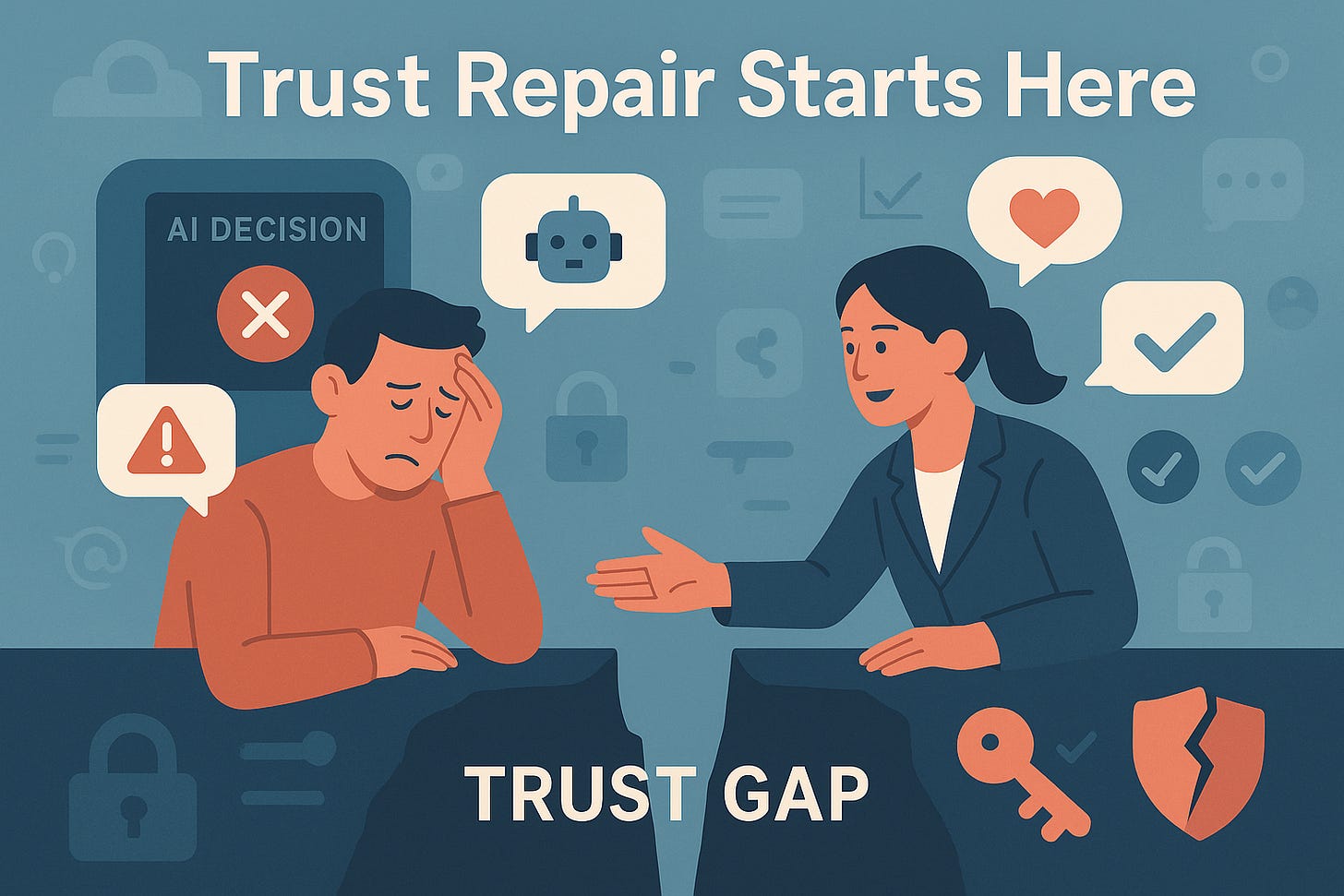The Contact Center as the Last Line of Digital Trust Repair
When AI breaks trust, humans must restore it. Explore why contact centers are now frontline trust infrastructure, and what makes trust redemption possible.
The Contact Center as the Last Trust Bastion
In a world of black-box AI, predictive personalization, and chatbots that pretend to care, one part of the customer journey still holds the line:
The human voice on the other end of the call.
Welcome to the contact center: not just a service function, but the last bastion of trust repair in a friction-maximized digital landscape.
This is where consumers come not to be delighted, but to be heard.
To be validated. To claw back a fragment of control from a system that too often treats them as data points instead of people.
From Script Readers to Trust Restorers
The old model of the contact center agent was mechanical:
Stick to the script.
Control average handle time.
Avoid escalation at all costs.
But that model was designed for a different era, one in which users still believed the system was trying its best. Now, customers show up skeptical, frustrated, and battle-worn from failed self-service loops.
The modern agent isn’t just solving problems.
They’re reversing emotional attrition.
They are:
Interpreting decisions made by opaque AI systems.
De-escalating after para-social trust has collapsed.
Acting as translators between algorithmic logic and human reason.
They are not just handling calls.
They are performing trust triage.
Where Automation Breaks Down, Humans Step In
Here’s what the automation pitch forgets:
Trust doesn’t scale without coherence.
And coherence requires context, something AI still struggles to deliver.
Real-world trust breakdowns:
An AI system cancels a user’s flight, and they are unable to speak to a person until they scream on Twitter.
A “predictive review engine denies a healthcare claim,” and the only appeal path is a chatbot that rephrases the same denial.
A content moderation algorithm bans a creator for a policy they didn’t know existed, with no feedback channel or escalation option.
In every one of these cases, the brand fails until a human intervenes.
It’s the human who says:
“I’m sorry, that must be frustrating.”
“Let me look into that personally.”
“I can’t fix the system, but I can make sure you’re not lost in it.”
And just like that, trust is redeemed, damaged but not destroyed.
Earned Trust Redemption: Tone, Access, Empowerment
Not every contact center conversation results in resolution. But the way that conversation unfolds matters even more.
What restores trust isn't just the outcome. It's interaction quality:
Tone: Calm, warm, affirming, counterbalancing the cold logic of automation.
Access: The ability to reach a human, without screaming “representative” 15 times.
Empowerment: Agents with the authority to make decisions, not just take notes.
The customer doesn’t need a miracle. They need a real person who can act.
This is earned trust redemption.
It doesn’t come from empathy alone.
It comes from the power to resolve.
The Contact Center Is the UX
As every other touchpoint becomes more automated, the contact center is often the first human interface a user has after trust has already failed.
That means your real UX is the moment someone answers the call.
And your brand is only as trustworthy as the person who says,
“I’ve got you. Let’s fix this.”
Why This Matters Now
If you’re investing in AI without investing in trust repair capacity, you’re not building a modern CX stack; you’re building a rage funnel.
Trust isn't self-healing.
Automation can't apologize.
Chatbots can't detect nuance, shame, panic, or fear.
Humans can.
And in the age of explainability failure and para-social collapse, the contact center may be your only chance to get it right.
Coming Next:
“The TikTokification of Trust: Why Shortform Signals are Breaking Buyer Confidence” — a breakdown of how bite-sized content disrupts long-form credibility and saturates the trust loop.


